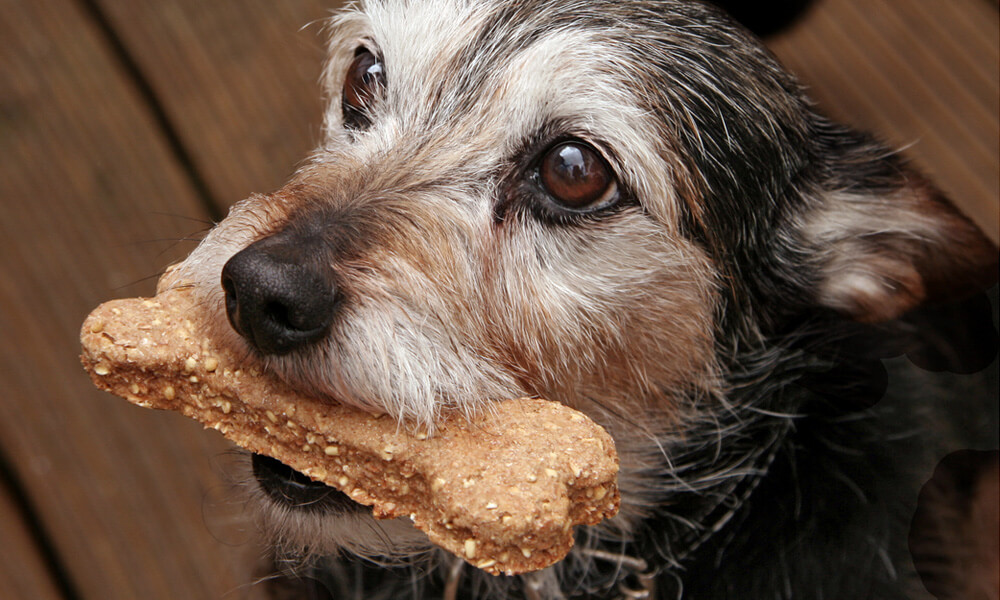Blog, Treat Recipes
Treat guidelines for dogs
Whether you are using treats for training and behaviour rewards or as a bedtime snack, finding the right treats for your dog can be a daunting task.
There are so many types of commercial dog treats available on the market today that a trip to your local pet food store can easily make your head spin.
Packaging has become brighter and more alluring. Labels are written with large and very attractive fonts claiming health benefits that can make you wonder if you shouldn’t be eating some yourself.
So, how do you pick a healthy dog treat?
It’s actually pretty simple.
- Opt for treats made from fresh and minimally processed ingredients.
- Every ingredient on the label should be easily recognizable with named sources. “Animal meat” is too vague—what kind of animal? “Poultry meat” is more specific, but does it come from chicken, turkey, or another bird?
- Stay away from treats loaded with salt, sugar and fat.
- Treats should be gentle on your dog’s teeth. Avoid any treat so hard that you can’t push your thumbnail into it and leave a mark.
- Treats should contain no artificial colours or flavour’s.
Where are the treats made?
Know the source of ingredients and who is doing the manufacturing. Choose a company that you can call to speak with someone who is knowledgeable
The 10% rule
Treats contain calories and calories count. Obesity is one of the fastest growing health problems for dogs in the UK. Treats should not exceed 10% of your dogs daily calory intake.
Cut the treats in half. Dogs care more about the number of treats they get rather than size of the treat
Vegetables and fruits
You can skip commercial treats and try offering vegetables such as baby carrot, green beans, zucchini or fruits such as banana, pear, watermelon and apple slices (with no seeds). These have nearly no calories and are usually low in protein, fat, sodium and phosphorus.
Homemade Treats
It’s very easy to make you own dog treats. Here are a few simple recipes.
The training treat.
Slice boneless chicken breast, meat or fish into very thin strips. Place the strips on parchment paper and bake them for at least three hours at 80 degrees Celsius. The low temperature dries the meat slowly and the strips end up nice and crisp.
Yogurt & peanut butter treats.
Combine 200 grams goat or sheep yogurt and a few teaspoons of peanut butter with enough whole wheat flour to create a stiff dough. Roll dough to 5mm thickness and cut into shape. Place cookies on parchment paper and bake approx 12-15 minutes at 170 degrees Celsius.
The super easy treat.
Mix 1-2 jars of dog-safe baby food (no onions or other ingredient that aren’t safe for dogs) with enough whole wheat flour to create a stiff dough. Roll dough to 5mm thickness and cut into shape. Place cookies on parchment paper and bake approx 12-15 minutes at 170 degrees Celsius.
Other low-calorie treats that can work well are plain popcorn, miniature marshmellows and plain rice cakes broken into little pieces.
More recipes can be found on our Facebook and YouTube channel.
If you want to know how to choose the best dog food, this guide will explain the latest facts and findings on a variety of ingredients, pet food marketing as well as debunking some popular myths.

